1940 Quarter Coin Value: How Much Is It Worth?
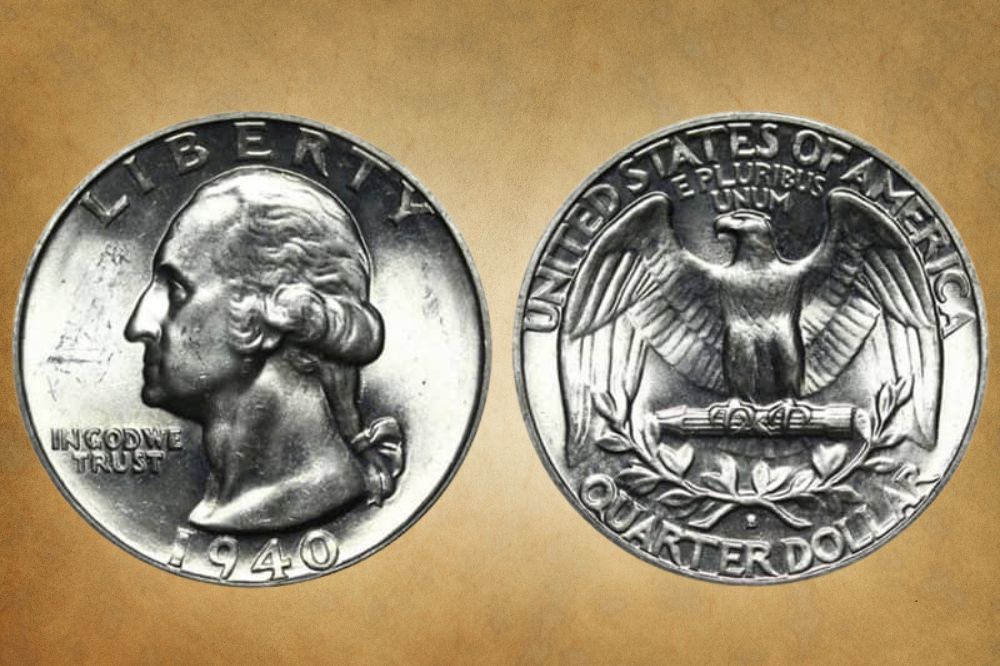
Did you find a 1940 quarter in your pocket change, drawers, or a collection of souvenirs and wondered how much the coin is worth?
Washington quarters are named after George Washington, a popular president and a Founding Father. Unsurprisingly, most people are excited to come across coins and other memorabilia of the nation’s first president.
If you have a 1940 quarter, it might be worth more than face value, depending on the coin’s condition. Other factors, such as the mintmark and mintage, also determine the coin’s value. If you are lucky to have a rare error, it might be worth hundreds of dollars!
Read on to find out just how much your 1940 quarter is worth. You will also learn about this coin’s interesting history, features, and common errors that can bump up the coin’s worth.
Let’s get started!
1940 Quarter Value Chart |
||||
| Mint mark | Good | Fine | Extremely Fine | Uncirculated |
| 1940 No-mint mark Quarter Value | $8.50 | $9 | $10 | $8,500 |
| 1940 D Quarter Value | $10 | $20 | $50 | $5,000 |
| 1940 S Quarter Value | $8.50 | $10 | $15 | $8,000 |
| 1940 Proof Quarter Value | – | – | – | $7,750 |
1940 Quarter Value Guides
If you are eager to learn about the 1940 quarter value, this section is for you. The Philadelphia, Denver and San Francisco mints struck millions of Washington quarters in 1940. In addition to the regular strikes, the Philadelphia mint produced several proof coins for collectors.
In light of this, there are four varieties of the 1940 quarter. These are:
- The 1940 No-mintmark Quarter
- The 1940 D Quarter
- The 1940 S Quarter
- The 1940 Proof Quarter
Let’s now look at the value of each coin variety.
1940 No-mint mark Quarter Value
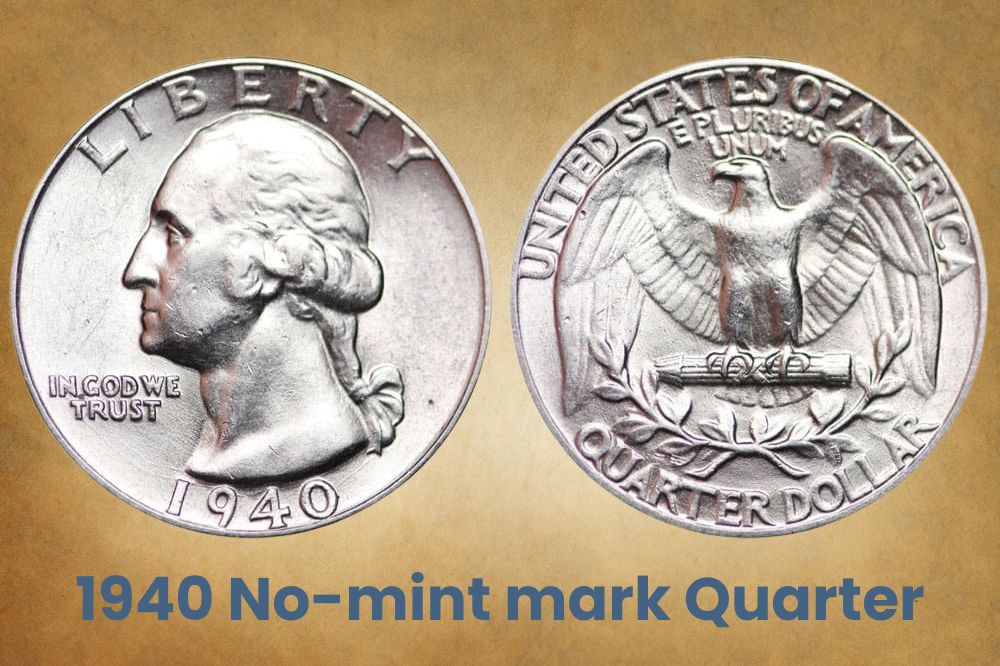
The Philadelphia mint struck about 35,704,000 quarters in 1940. Many of these coins were saved by the roll and the bag while still new, so gem-quality coins are plentiful.
The 1940 Washington quarters minted in Philadelphia do not have a mintmark. That said, most coins were well-struck, but it is still common to find coins struck using worn dies, even those in gem condition. As such, I recommend being picky when collecting the no-mintmark Washington quarter.
Due to the high mintage, these coins are plentiful in circulated condition, but the good news is that your 1940 quarter might be worth more than face value. In this circulated condition, a 1940 quarter can fetch between $13 to $22.50.
In mint state, uncirculated condition, a 1940 coin can be worth up to $8,500. The most expensive 1940 Washington quarter was graded MS68 and sold for $19,975 in 2013.
1940 D Quarter Value
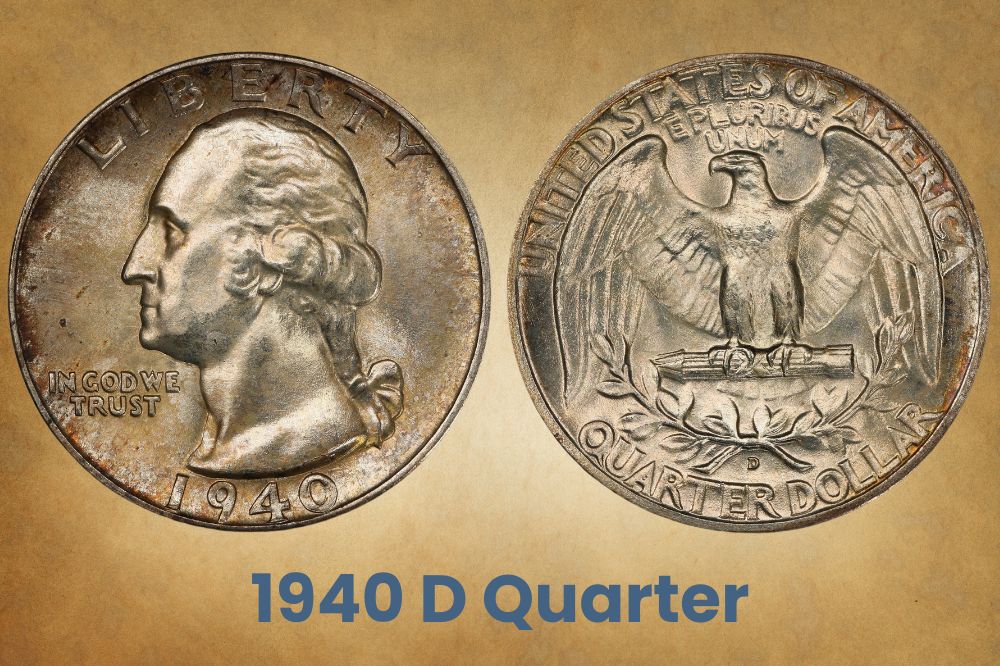
At just 2,797,600, the Denver mint produced significantly fewer coins in 1940. The low mintage can be attributed to the fact that there was still a large reserve of 1939 Washington quarters, and the Mint did not see a need to strike too many quarters.
Collectors saved quite several brilliant uncirculated 1940-D Washington quarters, so these are only slightly scarce but are generally more accessible compared to other BU quarters.
The 1940-D quarters are plentiful in mint uncirculated condition up to mint state (MS) 66 and slightly scarce in grades MS67 and above.
Like its contemporaries, this issue was struck well and boasted sharp lines and brilliant luster. If you are picky enough, you might come across 19040-D Washington quarters in gem, superb gem, and super lustrous, frosty white gem grades.
In circulated condition, 1940-D Washington quarters are worth between $8 and $130. Your quarter might fetch up to $5,000 in mint uncirculated condition.
According to the Professional Coin Grading Service (PCGS), the most expensive 1940-D quarter is graded MS68 and sold for $17,500 in 2022.
1940 S Quarter Value
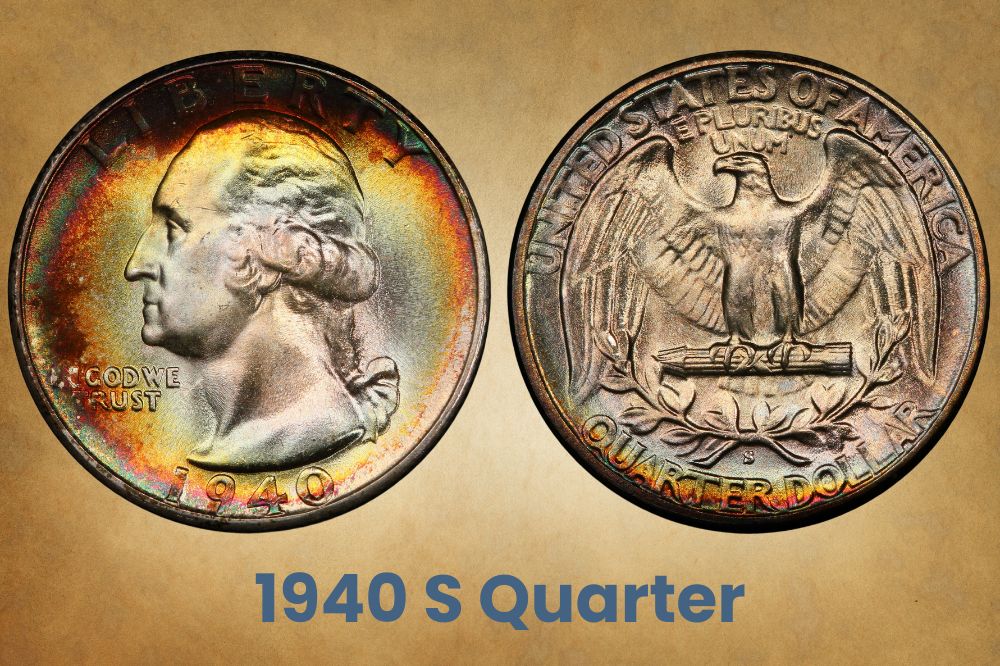
The San Francisco mint dramatically increased production of quarters in 1940. With 8,244,000 issues, the mint produced more than three times the number of quarters in 1939.
Due to the high mintage, the quality of the 1940-S quarters deteriorated. The high die usage resulted in many coins featuring eroded lines, faint lettering, and poor luster. It is said that mint workers would aggressively re-polish dies and strike more coins resulting in an appealing quarter with missing details, distortion and inferior design.
That said, there are numerous examples of mint state 1940-S quarters through to grade MS66. Advanced collectors may also access examples in MS67 and above.
With such a high mintage, 1940-S quarters are plentiful in circulated condition, and their value ranges between $8 and $27.50.
In mint state, uncirculated condition, the 1940-S Washington quarter can fetch up to $8,000. The most expensive S-quarter from 1940 is graded MS68 and sold for $10,200 in 2021.
1940 Proof Quarter Value
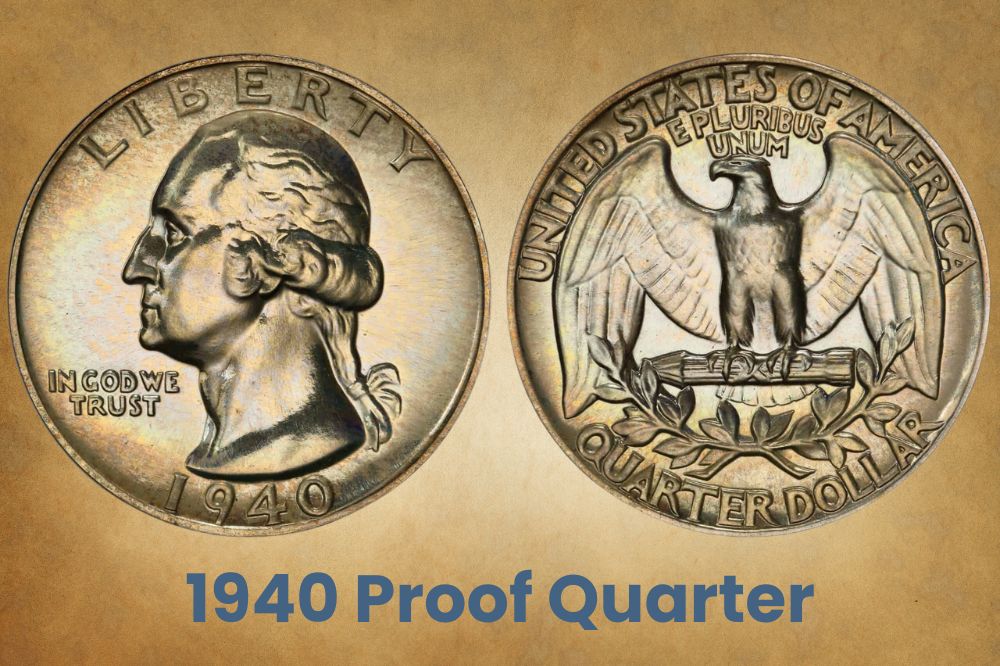
The Philadelphia mint used eight obverse, and seven reverse does coin the 1940-proof quarters. The mint struck about 15,000 issues but many of those were unsuitable as proofs. In the end, the official number of proof quarter dollars of 1940 is 11, 246 but 66 of these were lost to the assaying process during coining.
Mint workers were keener on quality than they had been in previous years. Proof gems are plentiful, with very few examples showing overly polished dies. Proof quarters in grade MS67 and above are, however, rare.
A 1940-proof quarter can fetch between $55 and $7,750, with the most expensive graded MS68 sold at $8,625.
Related Posts: 17 Most Valuable Modern Quarters Worth Money
1940 Quarter Errors
Let’s jump straight into examples of quarter-error coins minted in 1948. Errors attract a lot of attention from collectors as the coins can fetch hundreds or thousands of dollars depending on the type of error.
1940 Quarter Doubled Die Error
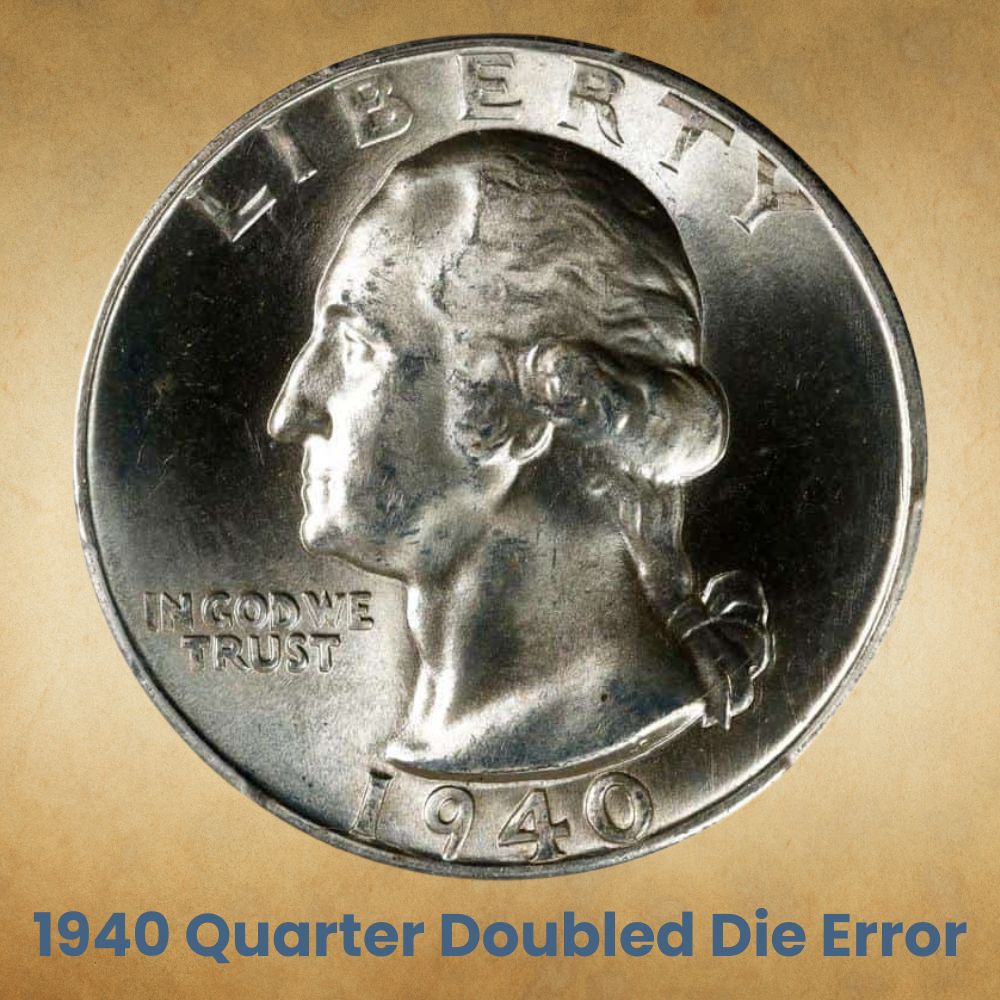
There are examples of 1940 doubled die quarter errors from the Philadelphia, Denver, and San Francisco mints.
This particular error occurs when the die creates a doubling in the design. In the past, mint workers struck coin designs twice to imprint every detail of the design onto the coin. Even the slightest adjustment in the coining machinery would cause a double image which would then be imprinted onto the coin.
Doubling appearing on the reverse is known as double die obverse, common in the Philadelphia, San Francisco, and Denver Washington quarters of 1940. In particular, the doubling is noticeable on the date and letters on the obverse.
A 1940 quarter with a doubled die error can fetch between $70 and $130 depending on the extent of the doubling, with more doubling fetching more money.
1940 Quarter Repunched Mint Mark Error
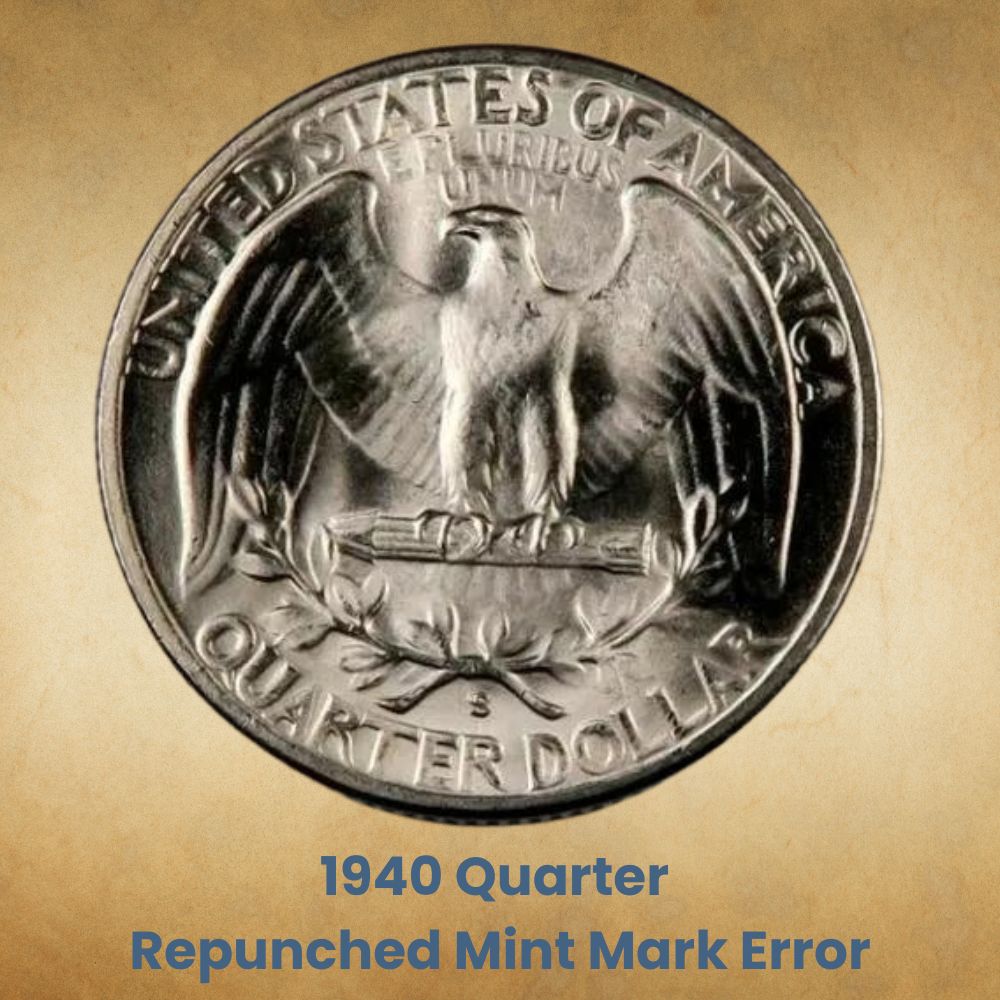
A repunched mint mark error occurs when the die strikes the mintmark twice and obscures the original mintmark.
The repunched mint mark error is more noticeable on the Denver quarters than on the San Francisco ones. That said, the error is quite small and subtle and doesn’t attract high prices.
1940 quarter repunched mint mark error coins have solved for up to $20 in mint state MS65 to MS66.
Related Posts: 16 Most Valuable Quarter Errors
History of the 1940 Quarter
The history of the 1940 quarter dates back to 1924 when Congress set up the United States George Washington Bicentennial Commission to plan for the 200th-anniversary celebrations of the birth of America’s first president. The celebration of President George Washington would happen in 1932.
As part of the fete, the Bicentennial Committee proposed a commemorative Washington half a dollar in place of the Walking Liberty design. Even before receiving approval from Congress, the Commission held a competition for the new half-dollar design.
The Commission planned to have the same artist design the medal and then use this design as a basis for the coin. The design was based on Jean-Antoine Houdon’s sculpture of George Washington in 1786.
After several artists submitted their entries, the Commission of Fine Arts and the Bicentennial Committee chose Laura Gardin Fraser’s design. Gardin was a renowned coin designer and had designed a few notable commemorative coins such as the Oregon Trail Memorial coin.
In 1932, lawmakers introduced legislation to replace the Standing Liberty quarter instead of the half dollar so that the new Washington coin would be a quarter and not a half dollar as earlier proposed by the Bicentennial Committee. The legislators also argued that the Standing Liberty was difficult for the Mint to strike, and replacing it would relieve the Mint and allow the production of a simple coin.
The United States Treasury Department had not been involved in the earlier competition and therefore rejected Fraser’s design and called for a new competition. Ultimately, the Treasury chose a different artist, John Flanagan, to design the new Washington Quarters.
The Mint released the Washington quarter into circulation on August 1, 1932. Unlike most earlier coins, the Washington quarter struck very well, which continued to be the case well into the 1940s.
Related Posts: Top 10 Most Valuable Bicentennial Quarters Worth Money
How to Identify 1940 Quarter?
Let us now look at the physical characteristics of the 1940 quarter. Knowing what to look for can help you identify a 1940 Washington quarter that might be worth hundreds or thousands of dollars or only worth face value.
The Obverse of the 1940 Quarter
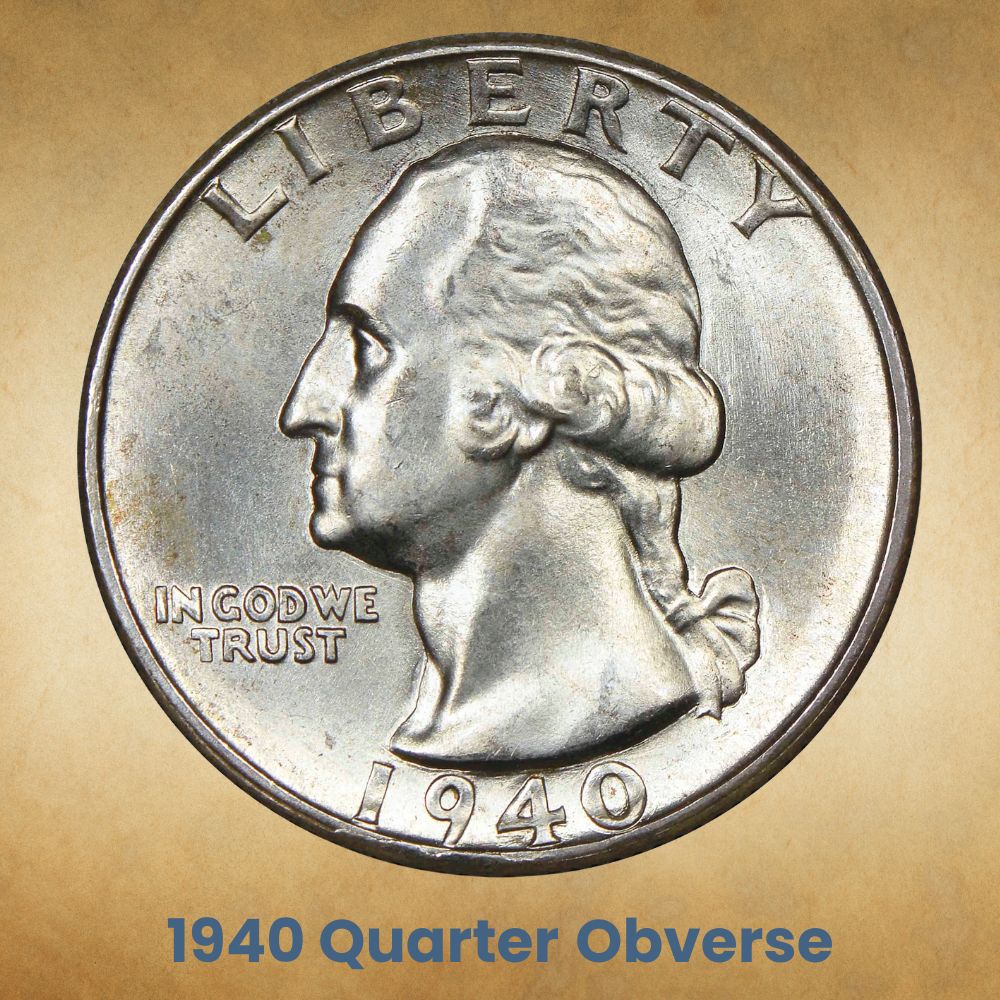
The obverse, also known as the head, is the top-facing side of a coin. The head of the 1940 quarter features the left-facing portrait of President George Washington with his hair held back in a low ponytail.
The word LIBERTY appears above the President’s portrait, while the date 1940 appears below.
The motto IN GOD WE TRUST is inscribed on the coin’s left side, right in front of the President’s neck.
The Reverse of the 1940 Quarter
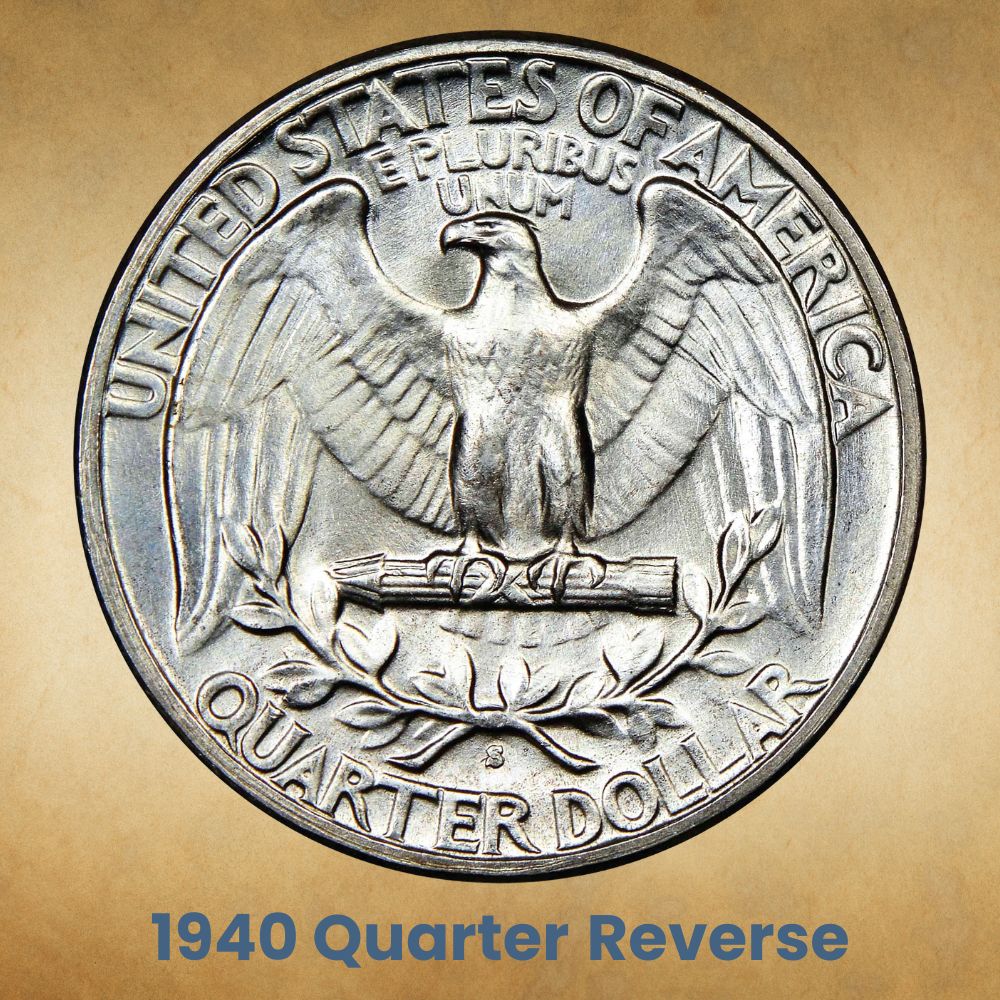
The reverse is the coin’s back side, also known as the tail. The reverse of the 1940 quarter features a bald eagle with its wings spread out.
The left-facing eagle is perched on a bunch of arrows. Underneath the arrows are two olive branches spreading out to the left and right of the coin and tied together at the bottom.
The motto E PLURIBUS ENUM appears at the top of the eagle’s head.
The words UNITED STATES OF AMERICA are etched around the coin’s upper rim while the denomination, ONE DOLLAR, appears around the lower rim.
Other Features of the 1940 Quarter
The 1940 quarter was produced at the Philadelphia, San Francisco, and Denver mints. Those minted in San Francisco and Denver have mint marks S and D, respectively, appearing on the coin’s reverse underneath the olive laurel.
This coin is composed of 90% silver and 10% copper. It is 6.30 grams, measures 24.30 millimetres, and has a reeded edge.
Related Posts: 20 Most Valuable State Quarters Worth Money
FAQ
In this section, I will go over a few common questions collectors ask about the 1940 quarter:
Is there anything special about the 1940 quarter?
There is nothing particularly outstanding about the 1940 quarter. That said, these coins were generally well-struck, and therefore there aren’t that many examples of errors.
The 1940-D quarter is special compared to the quarters from the Philadelphia and San Francisco mints. The reason for this is the low mintage attributed to the 1940-D quarters.
Are 1940 Washington quarters rare?
The 1940 quarters minted at the Denver facility are quite rare because of the low mintage that year compared to the San Francisco and Philadelphia mintages.
For this reason, a 1940-D quarter will typically attract a premium over the no-mintmark 1940 quarters and the 1940-S quarters.
All the Philadelphia, Denver, and San Francisco 1940 quarters become rare from grade MS67.
Is a 1940 quarter silver?
Yes, the 1940 Washington quarters are 90 percent silver and only 10 percent copper. Some collectors wonder whether they can melt silver coins and sell the metal for a premium.
The truth is the silver content in coins is very small and will fetch you little money in the commodities market.
In other words, the melt value of your silver coin is typically lower than its numismatic value, and you are better off collecting coins than trying to melt them.
Related Posts: 21 Most Valuable Quarters In Circulation
